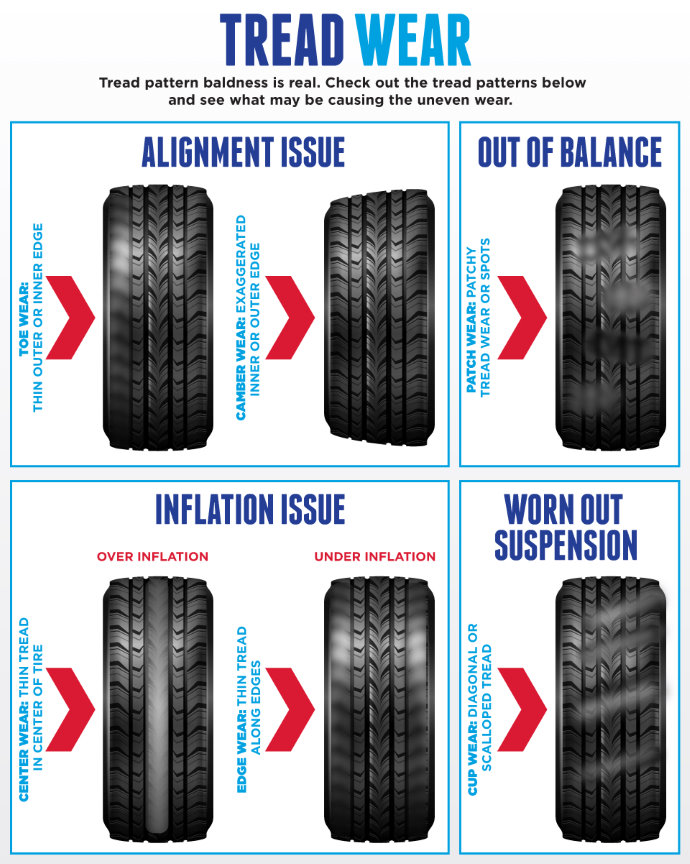Ensuring that your vehicle operates at peak performance involves more than just routine maintenance; it requires keen attention to potential issues that might compromise its functionality. One critical aspect often overlooked is wheel alignment. Proper wheel alignment not only extends the lifespan of your tires but also enhances fuel efficiency and overall driving experience. This comprehensive guide will delve into the subtle yet significant signs that indicate your car may need a wheel alignment. 1
Understanding Wheel Alignment
Before we delve into the signs, let’s briefly understand what wheel alignment entails. Wheel alignment refers to the precise adjustment of the angles of your vehicle’s wheels, ensuring they are parallel to each other and perpendicular to the ground. This adjustment maximizes tire lifespan, optimises fuel efficiency, and provides a smoother and safer ride. 1
Signs Your Car Needs Wheel Alignment
1. Uneven Tire Wear
One of the most apparent signs of misaligned wheels is uneven tire wear. Inspect your tires regularly for erratic tread patterns, as excessive wear on one side indicates a potential alignment issue. Addressing this promptly can prevent premature tire replacement and save you money in the long run. 1
2. Vehicle Pulling to One Side
If you notice your vehicle pulling to the left or right without input from the steering wheel, it’s a strong indicator of misaligned wheels. This can compromise your control over the vehicle and pose a safety risk. A proper wheel alignment ensures your car moves straight and true. 1
3. Off-Centre Steering Wheel
An off-centre steering wheel, which rests at an angle even when driving straight, is another clear sign of potential alignment problems. A centred steering wheel contributes to a more comfortable and controlled driving experience. 1
4. Vibrations or Shaking
If you feel unusual vibrations or shaking through the steering wheel, especially at higher speeds, it could result from misaligned wheels. If not addressed, this issue affects driving comfort and may lead to more significant problems. 1
5. Squealing Tires
Misaligned wheels can cause your tyres to squeal, particularly during turns. This noise results from increased friction between the tyres and the road. Proper wheel alignment eliminates this friction, providing a smoother and quieter ride. 1
6. Increased Fuel Consumption
Wheel misalignment can negatively impact fuel efficiency. If you notice a sudden increase in fuel consumption without any other apparent cause, a wheel alignment check is worth considering. Aligning your wheels can improve fuel efficiency and cost savings over time. 1
7. Difficulty Steering
A car that is hard to steer or feels unresponsive to steering inputs may be experiencing alignment issues. Proper wheel alignment ensures your steering system operates smoothly, enhancing control and responsiveness. 1
8. Off-centre Steering Wheel
In some cases, you might visually notice that the steering wheel is not straight when driving in a straight line. This discrepancy can be a symptom of wheel misalignment and should be addressed promptly to avoid further complications. 1
So, recognising the signs that your car needs a wheel alignment is crucial for maintaining both safety and performance. Regularly inspecting your tires, paying attention to how your vehicle handles, and promptly addressing any unusual symptoms can prevent more significant issues. Understanding these signs and prioritising wheel alignment as part of your routine maintenance can ensure a smoother, safer, and more efficient driving experience for years. 1

Disclaimer
The article aims to provide South African motorists with information about the signs that your car needs a wheel alignment.
Are you thinking of buying a new or used car? You will need comprehensive car insurance if you plan on financing your future vehicle purchase. Get a quote for affordable Comprehensive car insurance with PMD, with fixed premiums*, reducing excess*, and excellent service today. T’s and C’s apply.
Please get professional financial advice from a certified financial advisor to ensure you select the appropriate financial services product.
Sources:
This article was prepared by Eric Sandmann in his personal capacity. The views and opinions expressed in this article are the author’s own. The views and opinions in the article should not be attributed to anyone but the author unless expressly stated. Nothing in this article should be relied upon as advice, this publication is presented for informational purposes only. No person should act or refrain from acting in reliance on any information found in this article, without first obtaining proper financial advice from the appropriate professional. The author makes no claims, promises or guarantees about the accuracy, or completeness, of any information linked from, referred to, or contained in this article. The author reserves the right, to edit and change the content of this article.


























